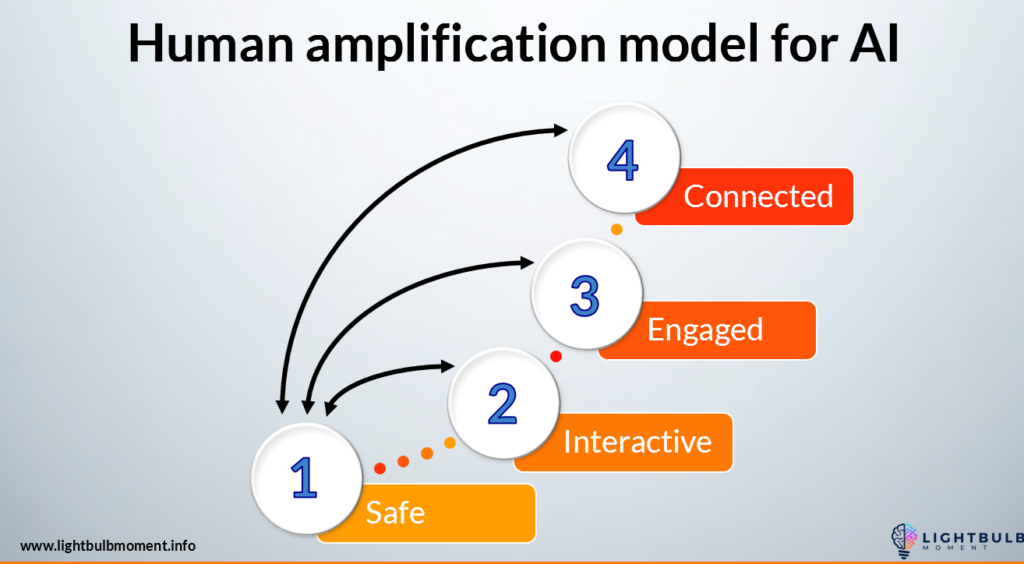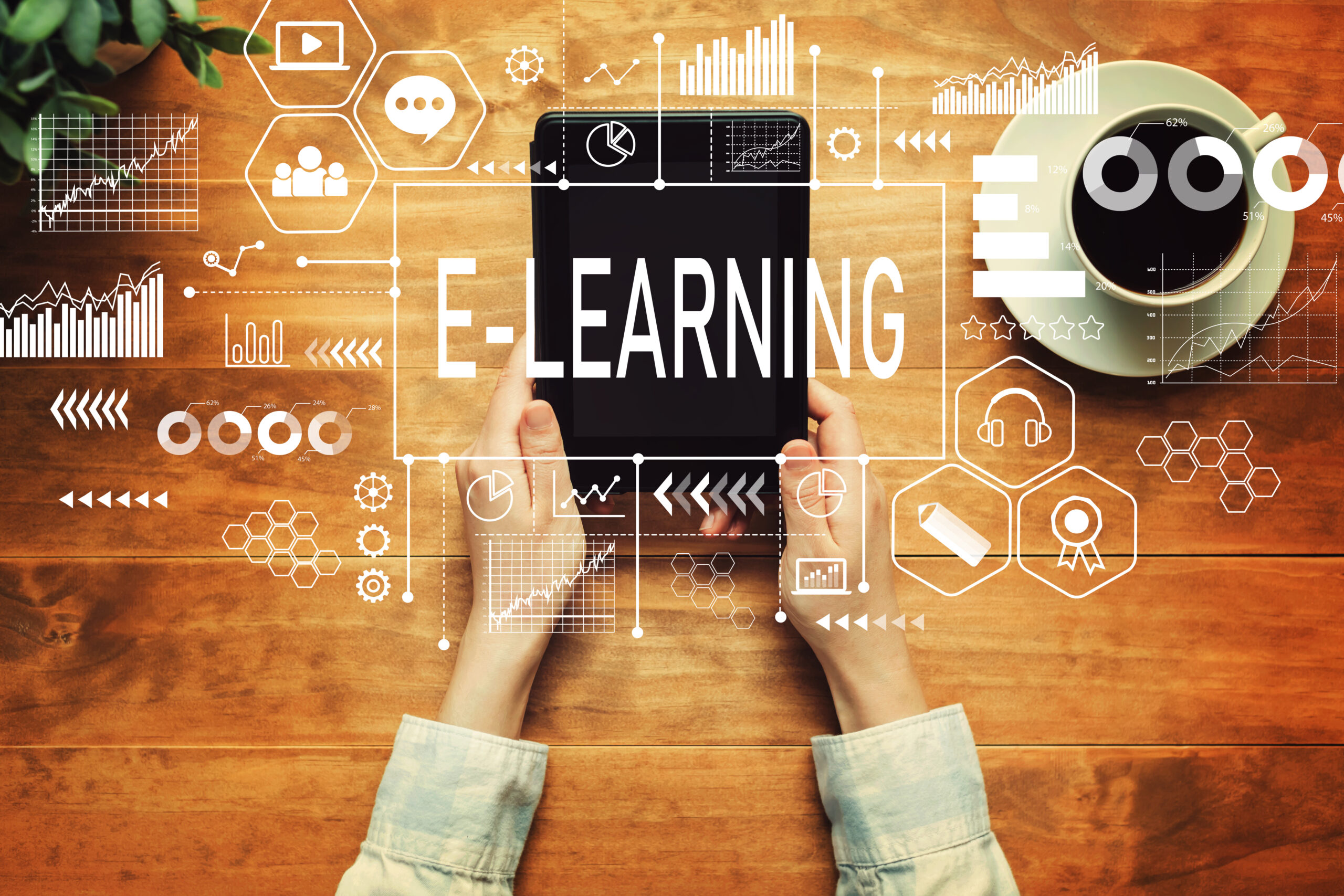Is AI the silver bullet for L&D? How can we take advantage and remain human? In this feature, Jo Cook looks at the evidence and shares her perspective
The use of generative AI holds so much for so many people – the promise of productivity gains, the overwhelm of selecting the right technologies, challenges of skilling people and the worry of future repercussions of an independent intelligence.
Artificial intelligence is having a big impact on learning and development already, and obviously that will only increase as we learn more about applying and using this technology appropriately and get more of the workforce skilled to use it.
What are L&D using AI for?
There’s a range of activities we can use AI technology for in the people profession. In his research survey Donald H Taylor includes the following list:
- Create learning content faster
- Facilitate information discovery
- Identify skills
- Improve efficiency/reduce costs within L&D
- Improve the quality of learning design
- Personalisation/adaptive learning
- Provide extra knowledge testing
- Provide extra skills practice
- Provide point-of-need performance support
- Use data analysis to support decision-making
I’m looking forward to what L&D professionals report as the benefits that they are seeing, and I’m hoping it isn’t just creating learning content faster – there’s much more to our work than that, as the list highlights.
“The most successful use cases of AI that I have seen have followed this process:
1. What is the business problem?
2. How can L&D help?
3. Where and how can AI support us?”
This follows the performance consulting approach of focusing on organisational issues, then how our work can problem solve and support, before looking at the right technology to use. When I explored making hybrid events equitable, not just poor add-ons to an in-person event, I referenced Julian Stodd:
“Social Learning is facilitated by technology, but it’s not caused by technology: Think first about design, and secondly about which technologies you have or can acquire, to facilitate it.”
For most of us, AI is a relatively new technology to grapple with in the last year or two, with the emergence of ChatGPT to the public. However the discussion on the HR on the Offensive podcast includes the point that, “from cloud HR to talent recruiting, learning … in reality there are certain areas is where actually AI is actually quite mature around things like personalised recommendations and skills where there’s been quite a huge focus on it.” Most learning management or experience systems have been including technology for adaptive learning for a number of years.
When focusing on the instructional design work, Dr Philippa Hardman has been experimenting with AI tools and researching responses to the output: “AI-assisted work consistently outperformed human-only efforts across all ID tasks” and added that the top skills for instructional designers are, “Deep knowledge of the instructional design domain and structured prompting skills.”
Reskilling in the age of AI
This brings us to the skills we need, across an organisation and within learning and development. Harvard Business Review published that, “reskilling initiatives are critical, because they allow companies to build competitive advantage quickly by developing talent that is not readily available in the market and filling skills gaps that are instrumental to achieving their strategic objectives—before and better than their competitors do.”
If HR, L&D and senior decision makers don’t address the skills development needs in their organisation, including AI, they will be lagging behind other companies that are taking these initiatives. They also run the risk of their most enthusiastic, resourceful and productive staff moving on elsewhere.
We do have to be very careful though. With regards university students, Dr Philippa Hardman shared about a research paper that “concluded that AI can harm student learning. Findings led the researchers to conclude that, “Students tend to use GPT-4 as a ‘crutch,” impairing skills development.’” My own experience is that we can’t always trust the output of AI to be complete or even accurate and that a ChatGPT summary from conference X/Twitter posts was bland and without the personal touches that a human-curated and written article would provide.
In the TJ News Inisight podcast I discuss the Microsoft and LinkedIn report that showed that 78% of AI users are bringing their own tools to work, but without guidance or clearance from their organisation. Not only can this be an information and technology security risk, it’s also a huge missed opportunity to bring the knowledge and skills of these individuals internal, and capitalise on them.
The role of managers
Leaders in organisations need to establish the vision and lead by example with exploring and using new technology and role modelling learning and self-development. They need to empower the management structure to enable the changes needed.
The Better Managers Annual Report stated that, “The role of the manager in organizational success is more critical than ever… serving critical organizational needs in the areas of continuous and guided learning, manager skills assessment, personalized manager development strategies, and analytics.” The HBR article stated that, “The average half-life of skills is now less than five years, and in some tech fields it’s as low as two and a half years. For millions of workers, upskilling alone won’t be enough.” This highlights that the whole organisation needs to be heading towards the same learning culture vision.
However a Gartner HR survey found that:
“The average manager now has 51% more responsibilities than they can effectively manage.”
So is a generous portion of AI on their plate just adding to the workload without managers knowing how to get the promised productivity gains?
A report from McKinsey emphasised that “…less than 30% of managers’ time is spent on people leadership, with three quarters spent on individual execution or administrative tasks. Generative AI presents an opportunity to automate some of these tasks, freeing up time for middle managers to actually lead. In fact, 58% of tasks related to “applying expertise” could be automated.”
On the TJ podcast episode “AI and L&D: enhancing human capability”, we explored AI’s potential in coaching and mentoring and discussed how AI can complement human coaching by providing scalable, cost-effective solutions for personalised learning and development. However, the speakers advocate for a balanced approach, recognising the irreplaceable value of human interaction and empathy in coaching.
The human-AI friction point
In another TJ podcast, “Artificial intelligence in L&D”, various learning leaders discuss their AI successes and examples. Stella Collins, Co-founder and Chief Learning Officer at Stellar Labs, presents an optimistic view, suggesting that AI can augment the L&D role by automating mundane tasks. This, she argues, would free up professionals to engage in more impactful activities, such as stakeholder engagement and strategic planning.
L&D also need to be involved in developing and applying the interpersonal skills for a thoughtful, rather than rushed, implementation of AI. AI ethics, compliance and proper usage are all areas needed to avoid pitfalls with implementing this technology. We also need to be focusing on the human skills and behaviours and continuously developing those strengths in ourselves and the workforce, including emotional intelligence, personal resilience, curiosity, creativity and more.

We need to focus both on learning and harnessing the technology, but also what it means to be human and the difference and edge that we bring to the work we do with AI. My Human Amplification model for AI zooms in on the elements we need for ourselves and our organisations when developing solutions. This includes thinking critically, integrating ideas, learning from our peers, reflection about the technology and with others, because it’s us that is creating the AI and using the AI, for human progression.
Jo Cook is Editor of Training Journal and an L&D specialist at her company Lightbulb Moment




